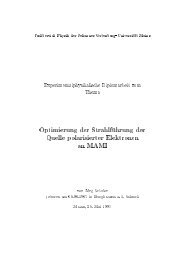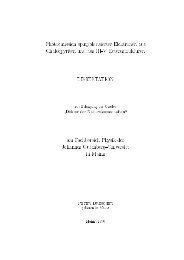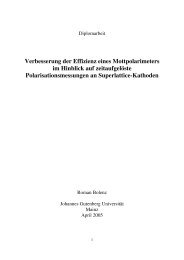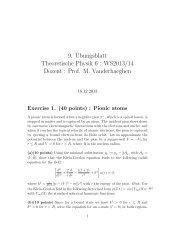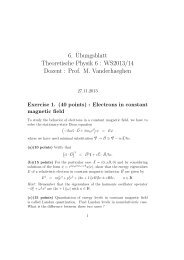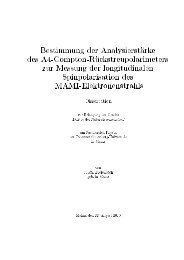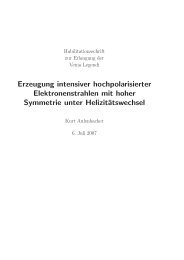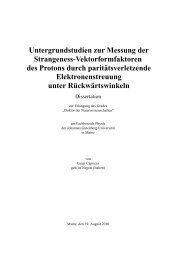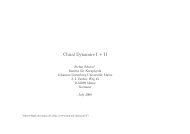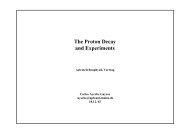EFFECTIVE FIELD THEORIES FOR VECTOR PARTICLES AND ...
EFFECTIVE FIELD THEORIES FOR VECTOR PARTICLES AND ...
EFFECTIVE FIELD THEORIES FOR VECTOR PARTICLES AND ...
Create successful ePaper yourself
Turn your PDF publications into a flip-book with our unique Google optimized e-Paper software.
2.2 chiral effective field theory 13<br />
experimental data in a quantum field theory. The aforementioned global<br />
chiral symmetry leads to relations among different Green’s functions if<br />
promoted to a local one. This was firstly discovered in QED with respect<br />
to a U(1) symmetry and these relations are thus denoted shortly as Ward<br />
identities [46, 47, 48]. Note that chiral Ward identities are still useful in<br />
a modified form if the underlying chiral symmetry is explicitly broken,<br />
i.e. in the physical case of non-vanishing quark masses [49].<br />
Green’s functions can be obtained elegantly by functional derivatives<br />
with respect to external fields in the path integral formalism. To that<br />
end, the SU(2)-adapted Lagrangian in equation (2.10) is extended by<br />
such external fields, which couple to the vector-, axial-vector-, scalarand<br />
pseudoscalar quark currents as follows:<br />
L = L 0 QCD+L ext = L 0 QCD+ ¯qγ µ (v µ + 1 3 v µ (s) +γ 5a µ )q− ¯q(s−iγ 5 p)q . (2.12)<br />
The color-neutral external fields acting in flavor space are defined with<br />
the help of the Pauli matrices 4 as<br />
v µ =<br />
s =<br />
3<br />
τ i<br />
∑<br />
i=1<br />
3<br />
∑<br />
i=0<br />
2 vµ i<br />
, v µ (s) = τ 0v µ 0 , aµ =<br />
τ i s i , p =<br />
3<br />
τ i<br />
∑<br />
i=1 2 aµ i<br />
,<br />
3<br />
∑<br />
i=0<br />
τ i p i .<br />
(2.13)<br />
Note that the vector current possesses an isovectorial and isoscalar part. 5<br />
The original QCD Lagrangian with finite quark masses can be obtained<br />
by setting s = diag(m u , m d ) and v = a = p = 0. Finally, the generating<br />
functional Z is given by<br />
exp(iZ[v, a, s, p]) = ⟨0∣T exp[i ∫ d 4 xL ext (x)]∣0⟩ (chiral limit)<br />
. (2.14)<br />
This functional represents the crucial link between QCD in the lowenergy<br />
limit and effective field theories for the strong interaction.<br />
4 The definition is given in equation (A.5) on page 95.<br />
5 The isoscalar vector current plays an important role in the SU(2) sector and is hence<br />
included explicitly. The isoscalar axial-vector current has an anomaly and is hence<br />
omitted [14, 50].



